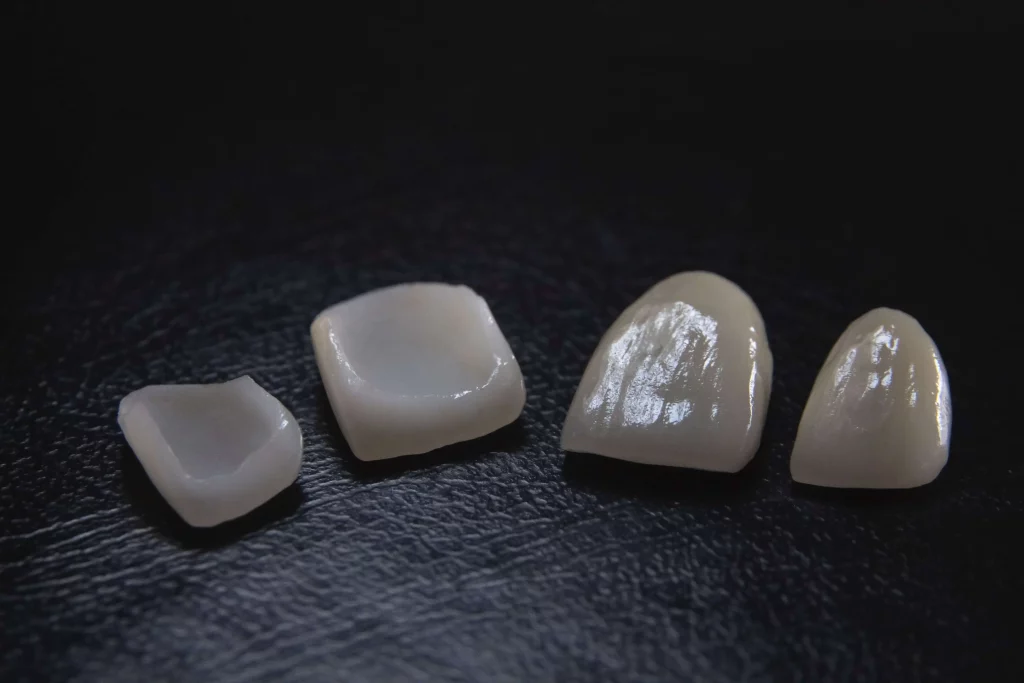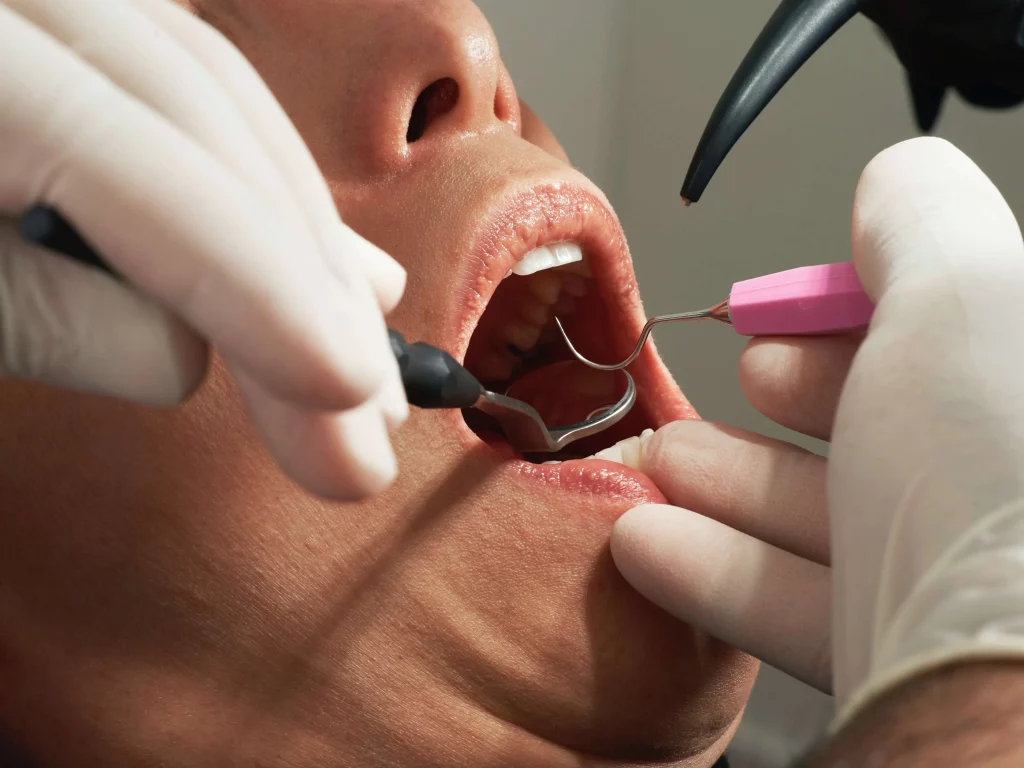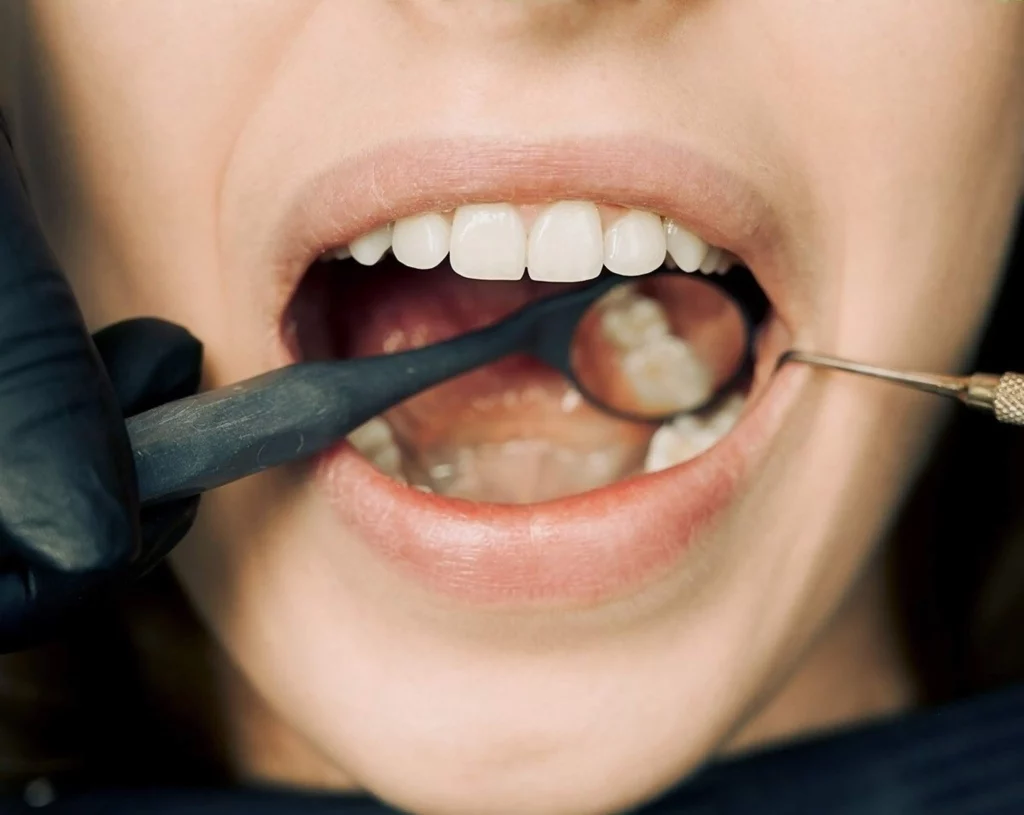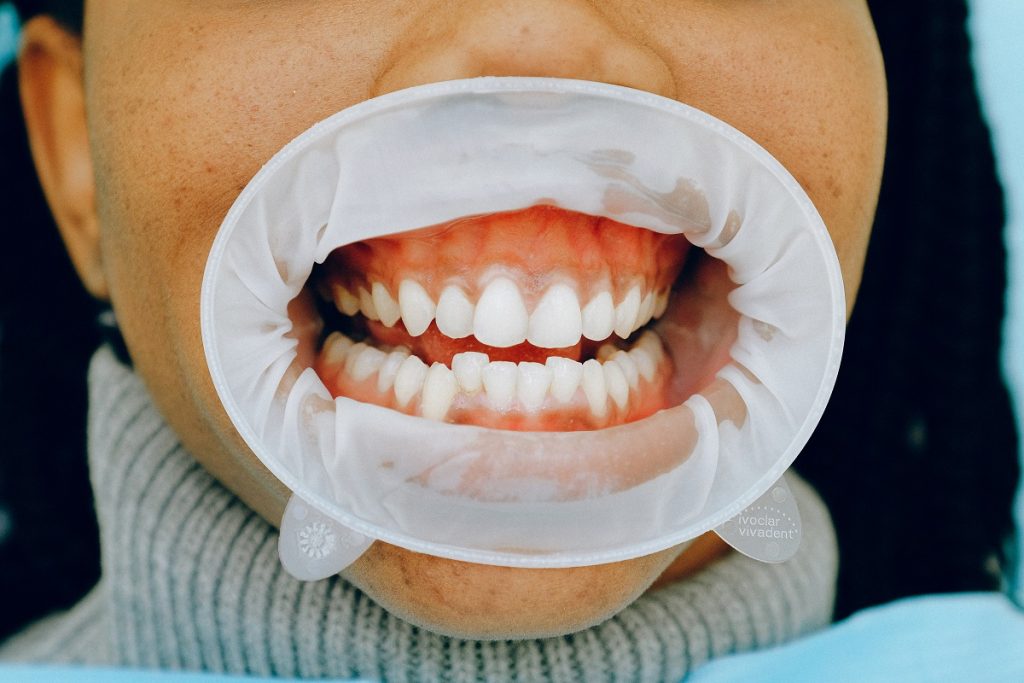SAFE DENTISTRY
ANTI-ALLERGIC DENTISTRY
Anti-allergic dentistry is a new and exciting approach to dental care that focuses on preventing allergic reactions by treating your teeth with specialized techniques.
Allergy is caused when your body reacts to something you eat or inhale, causing your immune system to release chemicals that cause inflammation. This can lead to swelling, redness and pain in the affected area. Allergies are common but they can be severe if not treated correctly. In fact, in some cases, allergies may even be life-threatening. Hence, anti-allergic dentistry ensures that people suffering from any known allergy that interferes with a generic dentistry procedure are either replaced or completely omitted. For instance, people allergic to anesthesia are recommended treatment options that do not require one.
Quite obviously, many dentistry materials include metals and metal alloys. However, the dental industry has popularized using non-allergenic materials with increased biocompatibility, making it the perfect choice for people with metal allergies. These materials include:
- Zirconium ceramics
- Zirconium implants
- Glass-ceramics
- BIOHPP
- VISIOLIGN composite materials (in implant solutions)
Amalgam is a dated dental fillings material that contains mercury. It was often used in the past but not anymore (hence, dated) because of the high risk of mercury allergy and toxicity. An additional reason amalgam is not a good choice is that it corrodes with the oral fluids and runs the risk of mixing with the oral tissues. Today, high-quality ceramic and composite inlay / onlay fillings are used and make for a perfectly safe alternative to amalgam.
Although it rarely happens sill, the patient may develop an allergic reaction to the impression material used for oral measurements for prosthesis treatment. However, thanks to technical advanced, intraoral scanners digitally transform the insides of our mouths into computer software and give even better, more accurate results.
Acrylic is used as a material in palate prostheses and in some cases, runs the risk of resulting in an allergic reaction. Hence, now specialized materials are used that are prepared using thermopress technology as a safer alternative for material used in palate prostheses.
Allergic reactions to local anesthesia are also very rare. However, they are not completely unheard of. Hence, an allergic test is conducted to check beforehand if a patient is allergic and determine the appropriate aesthetic material. However, if a patient is allergic to all types of local anesthetics, it becomes challenging to treat them. This is because now, depending on the pain tolerance level of the patient, the procedure is conducted without anesthesia.
This is almost impossible, especially in the case of deep caries. Lasers have turned out to be a life-saving technology in such cases. Thanks to the YAG laser treatment, the pain scale is reduced from 90 to 95%, allowing for an almost pain-free treatment procedure for caries.
METAL-FREE DENTISTRY
Metal-Free Dentistry
Metal-free dentistry has taken over the world with a boom. This rise in popularity can be attributed to people realizing how metals have long been causing numerous issues to individuals’ overall health. It does not help matters that metal braces were hurting people due to their structure and making the smile look artificial or made up.
Natural Smile
Metal fillings looked incredibly fake and did not match other natural teeth in terms of color. However, the recent introduction of possibilities such as porcelain and zirconia veneers and implants are easy to match the color of the teeth, making them look natural and unidentifiable for a more aesthetic appeal. The maintenance of metal-free dental implants is also easy and manageable, ensuring hassle-free smiles that will not budge in their appearance.
Safe Option
Metal fillings are not safe options for oral health due to the presence of mercury, a chemical element known for its harmful effects on the nervous system. Therefore, metal-free dental implants are receiving more consideration over traditional metal fillings to ensure safe and healthy dental solutions.
Durable Restoration
Metal-free dental implants are more durable than traditional metal fillings. The strength of the materials ensures crack-free veneers for ages. The materials can also resist friction and increase the overall toughness, reducing chipping chances.
Option for All
Metal-free dentistry is an all-inclusive solution for everyone because of zero mercury intervention. It is suitable for everyone, from children to the elderly, giving them a long-lasting, natural-looking smile. The options are also safe for pregnant women who are usually at more risk of the toxic effects of mercury.
Zirconia Dental Implants
Zirconia dental implants are made up of a sturdy material that is a combination of zirconium and oxygen. The result is a perfectly durable option that is easy to use and strong enough to last for ages. The material can also take the wear and tear without any loss on the surface or cracking. Since zirconia is not a metal, its corrosion-resistant properties of the material make it oral-friendly while ensuring there’s no metallic taste left behind in the mouth. Moreover, the aesthetic appeal also lasts longer due to its anti-corrosive properties.
Porcelain Veneers
Porcelain is the most trusted material for veneers due to its cosmetic appeal. The color of porcelain can be tweaked to match the natural teeth well. The material also allows the structure and shape to be perfectly replicated. The bonding during the process ensures that postoperative eating and drinking do not cause the veneers to chip off or fall, ensuring long-lasting, budget-friendly restoration. Porcelain veneers are also low-maintenance and do not require extra dental steps, as the color of these veneers does not fade quickly. Regular dental care is required to keep the smile bright for years.
AMALGAM FILLING REMOVAL
AMALGAM FILLING REMOVAL
Dental teeth fillings are a restoration technique intended to restore the form and function of teeth that have been damaged or decayed. Due to their strength, durability and affordability, amalgam fillings, composed of many different metals, are commonly used in restorative procedures. But a metal alloy called mercury used to reinforce amalgam fillings makes up around half of the composition. The patient is more likely to be exposed to mercury as the filling disintegrates over time. This mercury can escape as particles or vapor. Patients may also be exposed to mercury when fillings are removed, which frequently happens with time whenever fillings need to be replaced. Many dental organizations advise avoiding replacing mercury fillings when they are still in decent form since doing so might subject the patient to more toxic vapors. Yet, some dentists think removing and replacing amalgam fillings may be done safely and has several health advantages.
The amalgam used in tooth restorations contains mercury, a neurotoxin, installed near the brain. The concern you have while replacing your previous silver fillings is that you can consume residual mercury in the procedure. As a result, the mercury may pass past your gastrointestinal tract and into the body, posing a threat to your innate immunity while raising the accumulation of toxic metals in your body. Patients could have symptoms connected to mercury, such as lack of appetite, anemia, and lowered infection tolerance, posing a threat to your innate immunity while raising the accumulation of toxic metals in your body. Although there is some debate as to how significant the risk of heavy metal poisoning to dental patients is, it is also generally acknowledged that susceptible people (patients with hypersensitivity to mercury, children, pregnant or nursing females, renal patients, healthcare workers) should not be subjected to amalgam fillings.
The removal of amalgam fillings requires a well-designed approach to handle this case proactively and reduce the danger of mercury poisoning during the treatment. It is necessary to employ cutting-edge technology as well as expert training.
- Safety Glasses: To safeguard your eyes, you should wear safety glasses.
- Cold Water: To lower the temperature while drilling out the filler, lots of cool water will be sprayed on it continuously to lower the temperature while drilling out the filler. Dentists cut the fillings into pieces rather than grinding them to minimize the number of vapors. First, it is far more effective at cutting than just an airflow device. Second, because it rotates more slowly, fewer mercury vapors are emitted and the tooth does not get heated up.
- High-Rate Suction: The dentist will employ a high-speed suction system. In drilling out the filling, this suction sweeps all debris out of the oral cavity.
- High-grade Air Cleaning System: Dentists have well-equipped treatment rooms that have a strong industrial-grade air purification system that reduces the level of mercury particles and vapors.
ZIRCONIUM IMPLANTS
In terms of chemical structure, zirconia, commonly known as zirconium dioxide, is a substance obtained from zircon. The chemical oxidation of zirconium metal converts it into a ceramic substance called zirconia. Zirconia is a transition metal with the hardness of metal and ceramic’s capacity for heat resistance. Dental implants work best when made of zirconia. It is bio-inert and will not cause chemical changes, impeach the tissues or degrade. Hence, I t serves as a non-metal substitute for titanium. Patients love it because it has a characteristic white shade; it gives you those pearly whites.
- Hypoallergenic
Zirconium is bio-inert that does not trigger sensitivity or allergic reactions such as those with titanium, the alternate material for dental implants. When oral tissues react with the implant material, there are chances that the implant might fall. Luckily, that is not the case with zirconia.
- Resistant to Chemical Corrosion
Zirconia will never corrode. Thanks to its bio-inert nature, it will not spread through the systemic circulation. In contrast, titanium is known to oxidize in a moist atmosphere.
micro-environment within the mouth is quite moist. Titanium can also corrode from toothpaste or other acidic foods or beverages.
- Resistant to Wear and Tear
Zirconia is exceptionally resilient and rigid under strain. This makes it an excellent choice for dental implants. While chewing, jaw muscles exert significant pressure on teeth and zirconia is sturdy enough to bear the pressure without wearing out.
- Adaptation to the Bone
Dental implant surgery can be successful or unsuccessful depending on how effectively the implant integrates with the bone. It can be problematic if the bone rejects the implant. Fortunately, zirconia has had success integrating well with the bones. Even the surrounding soft tissue prefers zirconia over titanium.
- Plaque Reduction
Smoothness is a hallmark of ceramic. Without nooks and crannies, plaque finds it difficult to adhere. Additionally, zirconia is non-polar in composition. Therefore, bacteria have a smaller chance of sticking to it. Zirconium implants promote healthier dental hygiene.
- No Metallic After Taste
The titanium implant is not the only thing you feel; you might taste it too. Titanium is metallic component is not the best implant material because of oxidation. Zirconia is bio-inert and therefore, does not produce any non-palatable aftertaste.
- Shorter Healing Phase
Because zirconia is not a metal, it does not transmit heat. It is healthier for the gums, particularly during the recovery phase.
- Maintains Aesthetic Appeal
Gum discoloration from titanium implants is common. Silver shedding out of the metal can discolor the gums. It is not a concern with zirconia implants, thanks to the white, non- corrosive composition. Your smile is preserved.
AUTOGENOUS GRAFT / BIOLOGICAL TISSUE REPAIR
Autogenous Graft | Biological Tissue Repair
The term “bio-tissue repair” refers to repairing tissues, organs and whole organisms using biological methods. This is done through living cells, proteins, enzymes, other biomolecules and non-living substances like metals. The goal is to replace or heal damaged tissue or organ systems to restore function. An autogenous graft is a type of tissue transplantation where the donor and recipient are the same people.
Autogenous Graft
In this procedure, doctors harvest healthy cells from the patient’s body and use them to grow new cells someplace else in the body, usually as a part of a healing process or creating an adequate amount of tissue or bone for surgery. It is also known as “tissue banking” and works wonders for healing oral tissues after surgery, especially for extraction areas that require swift healing for an implant. For instance, in a dental capacity, the harvested bone graft is used to treat bone deficiency in the jaw for the area to become eligible for implant surgery. Similarly, when a patient is experiencing gingival recessions, their tissue is harvested using soft gum grafts, also known as connective tissue grafts, available in the upper palate area of your mouth. However, in some rare cases, biomaterials are used when a patient’s tissues are insufficient to make up in quantity for the area requiring it. Naturally, this increases the workmanship of the procedure as the dentist would then recommend an allergic test to be conducted and check beforehand if the material is suitable for the patient and not risking a reaction.







